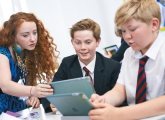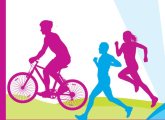Technology at Hazelwick School is utilised and facilitated across many departments. Our teaching philosophy is firmly aligned within the continuous evolution in technology in our world today. We believe it is fundamental to use that technology to enhance our blended learning approach. The strategy of combining online learning with school-based direction is embedded within our teaching to accommodate students’ diverse learning styles and to ensure an engaging and inquisitive learning environment at all times.
In computer science, students are introduced to a range of technologies from day one. In light of today’s ever changing industry, students learn to code in three different languages by the end of Key Stage 3 and have the opportunity to code on a range of applications and devices, including Raspberry Pi, BBC Micro Bit, Linux machines and Android app development software, where they code in Java. Being able to offer students these opportunities has meant that interest in code and technology has hugely increased across the school. Extra-curricular opportunities, such as a Coding Club, are offered on a weekly basis and have a 40-strong group of Years 7 and 8 attending regularly.
Along with this early introduction to computing industry standards, students have the chance to work with local businesses. Being situated very close to Gatwick airport and the Manor Royal industrial estate, we are fortunate in our links with several companies to support and nurture our young people, and their interest in technology and other STEM areas. This provides students with an opportunity to see the end goal of their work and to experience what a potential future career in the industry has to offer.
Best options
Across our large site we have over 1000 network-connected devices, as well as a dedicated IT team that is on hand to support and advise staff. Members are always on the lookout for new technologies and ideas that could be used to support students’ learning and they work hard to make changes wherever possible. Recently, for example, this has involved trialling the use of Microsoft Surface Pro Books for staff (replacing tablets and laptops), thereby encompassing modern technologies and giving staff the chance to work on one device both at home (with full connectivity) and in multiple classrooms.
Throughout the school, departments are harnessing the benefits of effective and structured use of technology. Whilst continually preparing students to achieve their maximum potential in whatever field that may be, we provide students with the chance to use alternative technology to best access their learning. In music, they are able to use a live sound recording studio to practise and perfect their pieces. We have a number of dedicated Mac suites in both media and music where students are given the opportunity to use software and hardware that they are likely to encounter if they pursue these areas in their future careers.
Within the art and design department students have the opportunity to use a range of techniques that they will be able to apply later in life. Software applications such as Adobe Photoshop and Illustrator are used to enhance and improve compositions that our students have created. Art and design staff often work in collaboration with their engineering technology colleagues, utilising the laser cutter for stencil design, visualisers for graphical techniques and a range of manufacturing processes to enhance their art work and to make our students’ visions a reality.
Engineering excellence
The engineering technology department is both visionary and innovative. In order to support Year 11 coursework lessons and revision outside the classroom, we use a range of Podcasts. These cover a diverse range of topics, from revision clips to individual students’ top tips on how to compete different coursework elements. This, in collaboration with directed lessons, is a great example of blended learning known as the ‘flipped’ classroom. A flipped classroom uses blended learning techniques by allowing students to watch lectures and presentations outside curriculum time to consolidate their knowledge and understanding. In addition to this, we have our VLE, Moodle, which includes revision resources, examples of student work, interactive quizzes and links to interactive software. In order to motivate students further we have introduced the use of revision apps such as Kahoot and Socrative which are having a positive impact on independent learning outside the classroom.
Students are encouraged to use Skype within a variety of collaborative projects and sixth formers have held webinars and meetings with Brighton University undergraduates during their architectural design week. Some classrooms are equipped with a visualisers (a powerful digital camera device linked to an LCD projector), which are used to harness students’ engagement and to support their understanding of many skills, such as rendering techniques or populating PCBs.
Furthermore, video games, as a worldwide new media subculture, has a monumental following and students are excited to use bespoke engineering technology revision games which consolidate knowledge and understanding and also incorporate a competitive edge.
We endeavor to be cutting edge regarding the manufacturing processes implemented within the department. All students use CAD to design and develop their ideas; Google Sketch-up, PCB Designer and 1234 Design are contemporary programs, keeping in line with industry. Students’ practical outcomes stem from using modern-day industrial practices to produce high quality and commercially viable products. We currently use a 3D printer, laser cutter, CNC lathe and milling machine across all Key Stages.
About the authors
Ash Godfrey is head of computer science and ICT, and Hannah Jones is head of engineering technology, at Hazelwick School in West Sussex.










